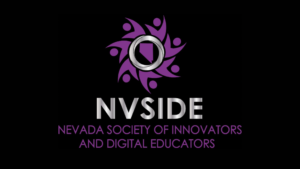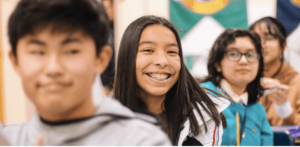Promoting Student Choice and Voice in Learning
Key Points
-
It is important that we provide a variety of opportunities for our students to develop skills in ways that meet their specific interests and needs.
-
When choosing learning activities and digital tools to use in our classroom, we must also be focused on how our choices will enable us to meaningfully assess our students.

Student choice and voice in learning are essential. It is important that we provide a variety of opportunities for our students to develop skills in ways that meet their specific interests and needs. We need activities and tools that will help students to develop content-area knowledge and skills, while also developing essential social-emotional learning (SEL) skills to best prepare them for their future.
As educators, when choosing learning activities and digital tools to use in our classroom, we must also be focused on how our choices will enable us to meaningfully assess our students. Assessments should help students to be able to identify where they are on their learning journey and offer a variety of ways for students to show what they have learned and can do. Assessments should enable us to gather evidence of student learning as they build skills in the content area, promote more engagement in learning and increase motivation for learning through the power of choice and voice. Assessment for learning helps us to keep students on track throughout our course and informs our instruction.
Assessments should help students to be able to identify where they are on their learning journey and offer a variety of ways for students to show what they have learned and can do.
Rachelle Dené Poth
When planning for assessments, I ask myself a few questions such as:
- What am I assessing and why?
- Do my students understand how they are being assessed?
- Which methods or tools will enhance my understanding of student progress and promote choice?
- How will I effectively provide feedback to students?
- How often do I assess and what comes next?
It is important that students understand the importance and value of assessments. Some questions that we should encourage students to ask themselves are:
- What have I learned?
- How did I learn it?
- How do I know that I have learned?
- How can I apply what I have learned to the real world?
These questions are beneficial for helping students to develop the SEL skills of self-awareness and self-management. Asking students to think through these questions encourages metacognition, which is an essential skill for student success. Through metacognition, students develop skills to connect with, evaluate and think about their learning.
Choosing a type of assessment
There are many possibilities when it comes to the format and frequency of assessments. We have traditional formats such as projects, quizzes, and tests which can be done using paper and hands-on materials. But we also have more possibilities than ever before through technology. Regardless of the type we choose, I have always believed it to be important for students to understand why I choose a particular method or tool. I always take time to talk to students about the reason behind using a certain method or tool, and also how I feel that it will help them to better understand the content or develop essential skills. When it comes to bringing in technology, consider how the technology enables us to enhance learning, to provide more for students or how it empowers them to drive their own learning.
There are many ways to assess students at varying stages of the learning process. Here are five ideas to explore:
1. Brainstorm: Use a collaborative space to have students share ideas and questions that they have. Some options include using a Trello board to provide a collaborative space to brainstorm ideas or gather questions. Additional options include Lino which is similar to a Trello board, or Padlet where students could also add audio or video responses. For a simpler option, try Google Jamboard which is quite versatile and could be used for many purposes in our classrooms.
2. Learning pulse checks: Encourage practice and be able to provide feedback and more targeted lessons by using some of the digital tools available to do a pulse-check for where students are in the learning process. We can implement some hands-on games through flashcards, gestures, conversations or leverage some of the game-based learning tools, such as Blooket, Gimkit, Kahoot!, Quizizz and Quizlet Live! Each of these offers a variety of question types or modes of play that will connect students with the content and provide us with real-time data to help plan our next steps and give meaningful feedback to our students.
3. Open-ended: Ask students to talk about what they have learned in a way that they choose. Some possible options could be using a tool like Synth or Flipgrid which promotes speaking skills as well as give students a chance to share their learning in a way that helps to build confidence. Students can also ask questions, respond to classmates and build communication skills.
4. Daily or weekly prompt: Give students a prompt or a sentence starter and ask them to compare or contrast, explain something specific that they have learned, and create a representation of it based on what interests them. Blogging is a great option because it creates a space for students to build their writing skills as they share ideas with their teacher and possibly their peers. It also promotes the development of digital citizenship skills. Using Spaces promotes communication and collaboration and enables teachers to give timely and meaningful feedback directly to students.
5. Creation: Have students design something visual to share what they have learned. There are many possibilities including the use of digital storytelling or making a video. Some tools such as Storybird, Story Jumper, or Buncee, offer many options for students to create a presentation. To represent data and information, students can create an infographic using tools like Piktochart or Canva. To promote collaborative creation, check out Book Creator. For an option without technology, encourage students to create a drawing or a sketchnote to share learning.
Beyond focusing on a specific digital tool, we can also use different methods such as choice boards, HyperDocs, or playlists, which promote students’ learning at their own pace, path and place. These options enable us to differentiate our instruction while promoting student choice on voice and learning.
Ongoing assessments are essential for student learning. When we can provide options that promote learner agency in learning, it will lead to more meaningful experiences that promote the development of essential skills for the future and empower students through self-driven learning.








0 Comments
Leave a Comment
Your email address will not be published. All fields are required.